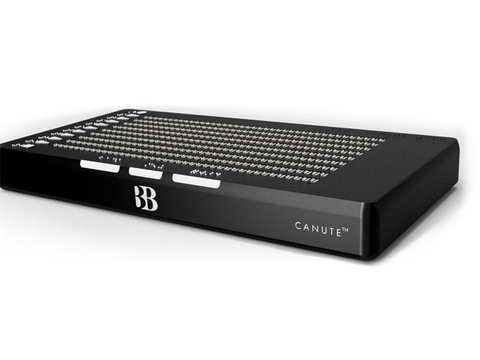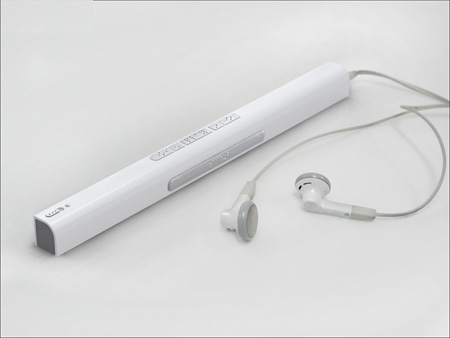AI-Powered Visual Aids: Enhancing Independence for Blind Users
AI-Powered Visual Aids: Enhancing Independence for Blind Users
Blog Article
Discover Innovative Devices Developed for the Aesthetically Damaged
The growth of cutting-edge devices for the visually impaired represents a significant improvement in access and freedom. Technologies such as clever glasses with AI capacities and mobile applications created to supply auditory descriptions are improving everyday experiences for individuals.
Smart Glasses for Navigation

Smart glasses designed for navigation are reinventing the means aesthetically damaged people interact with their atmosphere. These sophisticated tools make use of a mix of camera innovation, expert system, and acoustic feedback to provide real-time information about surroundings. By utilizing barrier discovery systems, clever glasses can signal customers to prospective dangers, making it possible for more secure movement in both acquainted and unknown settings.
The integration of GPS technology even more enhances navigation capabilities, permitting customers to receive auditory instructions as they relocate. This hands-free strategy not just promotes self-reliance however likewise empowers aesthetically damaged people to navigate city landscapes with increased confidence. In addition, numerous smart glasses are equipped with attributes that recognize spots and road signs, providing contextual details that boosts the individual experience.
Moreover, the development of these devices is continually progressing, with business functioning to enhance the precision of object recognition and increase the variety of navigational features. As clever glasses end up being more available and economical, they hold the prospective to considerably change life for visually impaired customers. Eventually, these innovative tools stand for an important step towards inclusivity, offering improved movement and a greater feeling of autonomy for people navigating the globe around them.

Mobile Application for Daily Living
How can mobile applications enhance the daily lives of aesthetically damaged individuals? Mobile apps are revolutionizing the means aesthetically damaged individuals navigate their settings, take care of everyday tasks, and accessibility info. These applications offer necessary support through numerous capabilities, promoting independence and boosting lifestyle.
Several innovative mobile apps are created specifically for daily living. For example, apps like Be My Eyes connect aesthetically damaged individuals with sighted volunteers via video clip phone calls, permitting them to get real-time assistance with jobs such as reading tags or navigating strange spaces. Similarly, Seeing AI, established by Microsoft, makes use of expert system to explain environments, read message, and recognize objects, properly transforming a mobile phone into an effective device for everyday aid.
Furthermore, navigating applications customized for the aesthetically impaired, such as Aira and BlindSquare, provide audio-based directions and ecological info, making it possible for users to traverse their surroundings safely and confidently. Beyond navigation and instant aid, mobile apps likewise support organization and task administration, with attributes that aid customers establish pointers, produce order of business, and track consultations. In recap, mobile applications act as essential resources, equipping visually damaged people to lead even more independent and meeting lives.
Wearable Technologies for Aid
Empowerment via modern technology is significantly apparent in the realm of wearable gadgets designed to help visually impaired individuals. These cutting-edge devices incorporate flawlessly right into every day life, improving navigation and supplying vital comments to individuals. For example, wise glasses outfitted with electronic cameras can recognize faces and check out message out loud, enabling users to interact even more confidently in professional and social setups.
An additional noteworthy development is making use of haptic comments systems in wearable devices. These systems use vibrations or other responsive signals to convey details about the customer's atmosphere, such as barriers or modifications in surface, boosting flexibility and security. Wearable technologies additionally consist of wristbands that attach to mobile phones, alerting individuals to notifications with refined vibrations, hence enhancing connectivity without reliance on aesthetic cues.
As these innovations proceed to develop, they are not just boosting self-reliance for aesthetically damaged people yet also promoting a better sense of addition in culture. By bridging the void in between obstacles dealt with in day-to-day living and the Screen readers for the blind potential for autonomy, wearable innovations act as crucial tools in the mission for equal rights and empowerment for those with aesthetic problems.
Audio Description Tools
Audio description devices play a vital function in boosting accessibility for visually damaged people, supplying them with the ability to engage with visual media. Mobility aids for visually impaired users. These tools offer narrated descriptions of essential visual aspects in films, tv programs, and live efficiencies, making sure that customers can totally understand the context and feelings shared with visuals
Audio description can be incorporated right into numerous systems, consisting of streaming solutions, cinema screenings, and live theater. Many prominent streaming solutions now include audio summary as an ease of access feature, allowing viewers to pick it conveniently. In addition to conventional media, specialized applications likewise exist, providing audio summaries for art events, galleries, and other cultural events.
The effectiveness of audio description hinges on the ability of the storytellers, who should communicate visual information succinctly without detracting from the original audio. Innovations in this area are also leading the way for more customized experiences, where individuals can readjust the degree of information and pacing according to their choices.
Braille Innovations and Devices
Braille tools and advancements have dramatically transformed the method visually impaired people communicate with text and details. Modern developments have actually led to the advancement of functional devices that boost literacy and freedom among users.
In addition, portable Braille notetakers incorporate conventional Braille input with contemporary capabilities, helping with note-taking, organizing, and record editing on the go. Screen readers for the blind. These small devices typically include text-to-speech capabilities, linking the void between Braille and auditory details
On top of that, ingenious Braille printers have actually emerged, enabling individuals to create Braille tags, files, and instructional products efficiently. This access fosters higher involvement in specialist and educational environments, eventually advertising inclusivity.
In addition, research into wise Braille innovations proceeds to increase. Devices that incorporate expert system are being discovered to give real-time navigation support and contextual details, boosting the customer experience in varied setups. Overall, these developments reflect a commitment to empowering visually impaired individuals through innovation, ensuring they can easily access and engage with the globe around them.

Final Thought
The development of innovative tools for the aesthetically damaged significantly enhances independence and top quality of life. These technologies not just foster better incorporation yet additionally advertise autonomy in daily tasks, ultimately contributing to an extra obtainable and fair culture for visually impaired people.
As clever glasses end up being a lot more easily accessible and economical, they hold the potential to dramatically change day-to-day life for visually impaired customers. Mobile apps are transforming the way aesthetically impaired customers browse their environments, manage daily jobs, and gain access to information. Applications like Be My Eyes connect aesthetically impaired customers with sighted volunteers by means of video telephone calls, permitting them to obtain real-time aid with jobs such as checking out labels or navigating unknown areas.Furthermore, navigating applications tailored for the aesthetically impaired, such as Aira and BlindSquare, use audio-based directions and ecological information, making it possible for customers to traverse their surroundings securely and confidently.The advancement of cutting-edge tools for the aesthetically damaged substantially enhances self-reliance and top quality of life.
Report this page